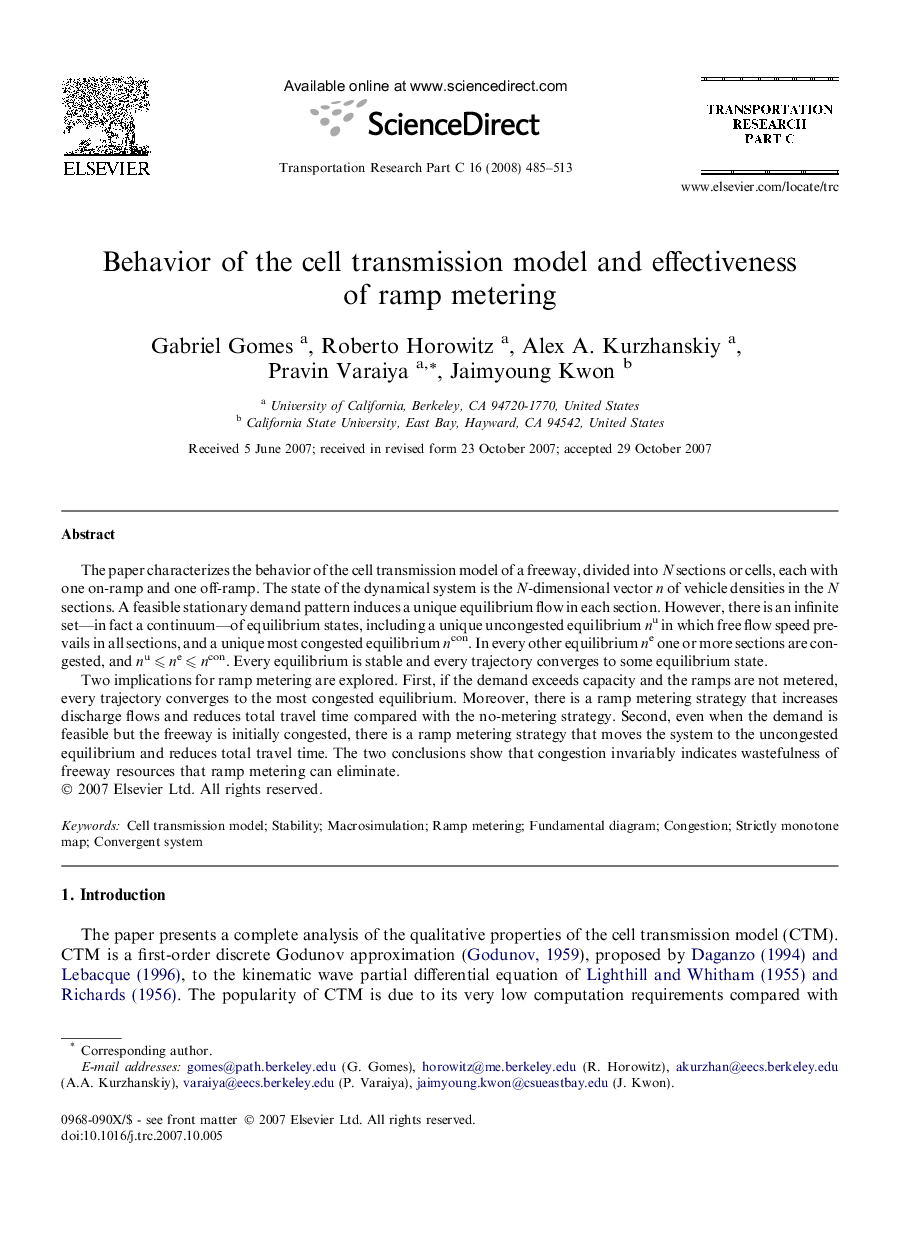| Article ID | Journal | Published Year | Pages | File Type |
|---|---|---|---|---|
| 525310 | Transportation Research Part C: Emerging Technologies | 2008 | 29 Pages |
The paper characterizes the behavior of the cell transmission model of a freeway, divided into N sections or cells, each with one on-ramp and one off-ramp. The state of the dynamical system is the N-dimensional vector n of vehicle densities in the N sections. A feasible stationary demand pattern induces a unique equilibrium flow in each section. However, there is an infinite set—in fact a continuum—of equilibrium states, including a unique uncongested equilibrium nu in which free flow speed prevails in all sections, and a unique most congested equilibrium ncon. In every other equilibrium ne one or more sections are congested, and nu ⩽ ne ⩽ ncon. Every equilibrium is stable and every trajectory converges to some equilibrium state.Two implications for ramp metering are explored. First, if the demand exceeds capacity and the ramps are not metered, every trajectory converges to the most congested equilibrium. Moreover, there is a ramp metering strategy that increases discharge flows and reduces total travel time compared with the no-metering strategy. Second, even when the demand is feasible but the freeway is initially congested, there is a ramp metering strategy that moves the system to the uncongested equilibrium and reduces total travel time. The two conclusions show that congestion invariably indicates wastefulness of freeway resources that ramp metering can eliminate.
